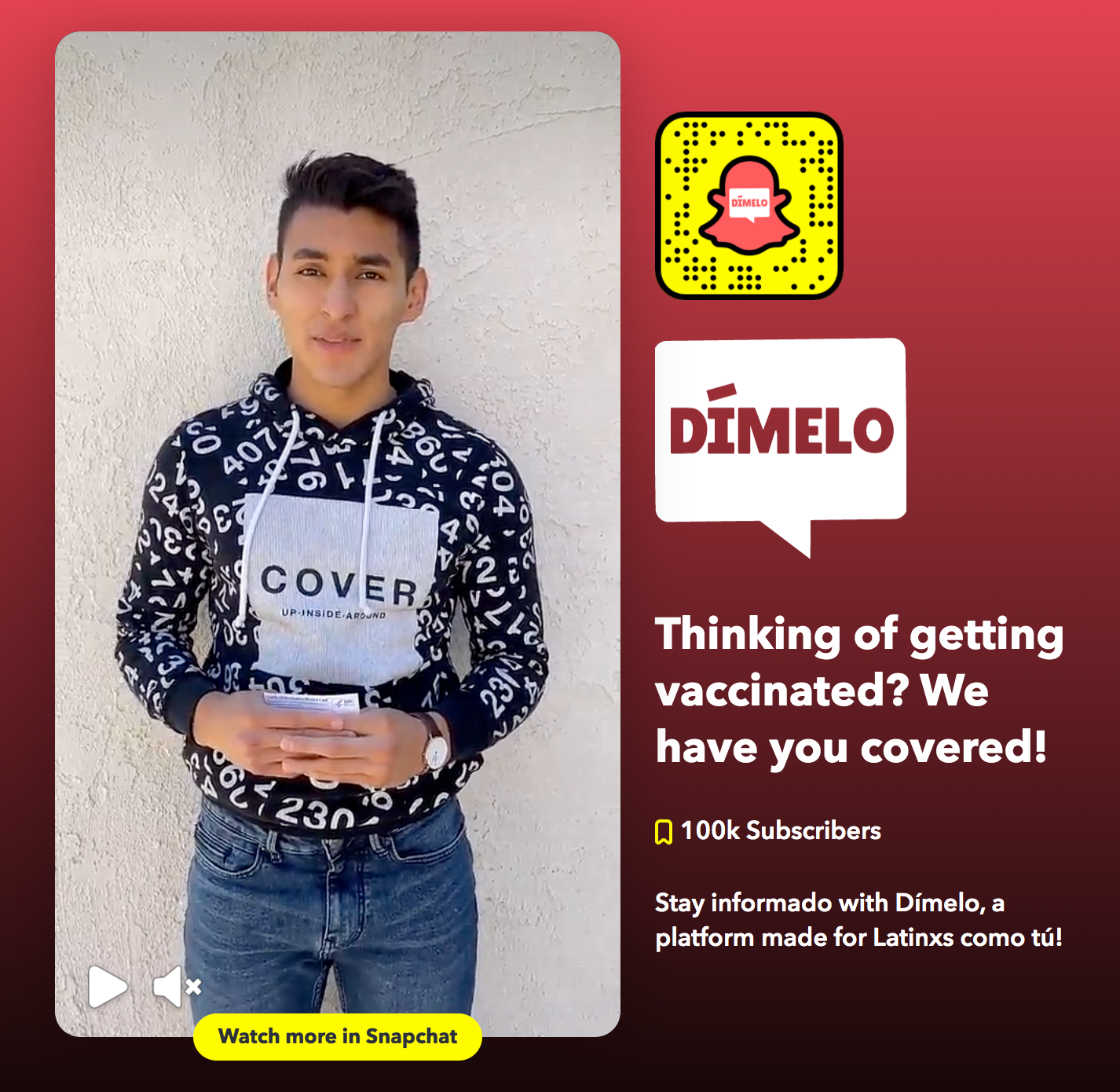By Carolyn Shapiro
In 2016, a group of Latino students at the University of Southern California came to Professor Amara Aguilar and told her they wanted to start a news outlet that reflected their culture and experience.
Annenberg Media Center, the student-run newsroom within USC’s Annenberg School for Communication and Journalism, produces a variety of stories on multiple platforms for the surrounding community. The Latino students thought the media center’s broad coverage either ignored Latino content or missed the mark when trying to include it, Aguilar said.
She helped the students launch Dímelo, a media source focused on stories important to and inclusive of young Latino readers and viewers. Dímelo started as an independent entity at USC but recently moved under the Media Center umbrella as a fully integrated, Latino-focused channel.
“It was basically because students wanted more representation in the newsroom,” said Aguilar, a longtime news reporter and social media producer who joined Annenberg as a professor nine years ago.
“They did not feel their stories were being covered.”
The students first suggested a Spanish-language news broadcast, but Aguilar convinced them to reconsider the habits of their intended audience. Young Latinos are less likely to watch Spanish-language newscasts, as their parents do, than they are to turn to social media for their news, she explained.
 Dímelo pushes out content on Snapchat, on Instagram and through podcasts, as well as on the Annenberg Media website. Its Snapchat feed, its most popular platform, has 180,000 followers, Aguilar said.
Dímelo pushes out content on Snapchat, on Instagram and through podcasts, as well as on the Annenberg Media website. Its Snapchat feed, its most popular platform, has 180,000 followers, Aguilar said.
Since creating Dímelo, Aguilar began teaching Social Media Storytelling for Latinx Audiences, a fall semester class that typically has eight to 15 students who feed content to the specialty publication.
Students choose whether stories run in English or Spanish. Any USC student, not only those in the journalism school, can write and produce stories for Annenberg Media.
Dímelo has two or three student editors every semester who are paid by Annenberg as hourly workers. Students in Aguilar’s class receive credit, and any other students volunteer to produce stories.
Aguilar and another Annenberg professor, Allan Lopez, serve as Dímelo’s faculty advisors. Aguilar also teaches classes in visual journalism and Engaging Diverse Communities and oversees a recently added Latinx media minor. This fall, she expects to lead a hybrid study-abroad program in Mexico.
Dímelo’s evolution from independent status to the Media Center reflects the increasing attention in traditional news on elevating diverse voices. “Sometimes things have to be created outside of the newsroom for them to get started and go,” Aguilar said.
While Dímelo gave up some freedom, it gains resources and crucial institutional support.
“Having the support of the official student newsroom of Annenberg and funding for our editor, paid editors, paid positions and faculty advisors, it makes a huge difference.”
Dímelo enjoys a collaborative relationship with the Media Center, Aguilar said, and has influenced the way the larger newsroom approaches its coverage, including the need to develop sources and to navigate the language. “We're having great discussions around the term ‘Latinx’ right now with our equity board and with the other editors,” Aguilar said.
Dímelo’s success has inspired two other Annenberg news entities targeted to diverse communities: Black., which produces digital content for people of color; and elevASIAN, focused on the Asian American and Pacific Islander community.
“What we're trying to do with Black. is give a voice to the Black student community that we haven't really seen before in any of our student publications,” said Miki Turner, an award-winning sports journalist and Annenberg professor who helped students launch Black.
As with the frustrations of the Latino students, Black. stemmed from an Instagram account where Black students raised concerns about USC’s culture with respect to race, Turner said. “So we kind of decided to pick up that mantle and look at our community in various ways and to try and create more cultural awareness and acceptance.”
ElevASIAN also arose to fill a gap in Annenberg’s coverage of Asian issues and voices, Professor May Lee wrote in an email. About one-third of USC’s student population is Asian.
“With the success of Dímelo, I thought that the creation of an AAPI platform would be beneficial to Annenberg and the young journalists and storytellers who want to connect with their identity and cover stories that matter to them,” wrote Lee, a veteran broadcast journalist who has specialized in Asian-American topics. “Given the challenging few years we've had with COVID and the explosion of anti Asian hate, this was an opportunity to be seen and heard.”
Students have a lot of freedom with their stories, though they should connect in some way to the community they’re writing for, Aguilar said. Dímelo reporters have covered the death of Kobe Bryant – a “huge figure in the Latino community” — and write frequently about food and culture. They choose whether stories run in English, Spanish or both. Their hard-hitting reporting has included a series on new laws for Los Angeles street vendors.
Aguilar said this content continues to shift the Media Center landscape at Annenberg. “As time goes by, I can see more diverse coverage being integrated into the newsroom,” she said.
“It’s not just our desk that covers issues Latinos care about, although we do consider ourselves the experts and a resource for the newsroom. We are happy to provide that, but we also have seen more diverse coverage.”

